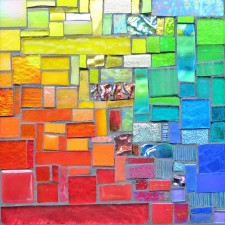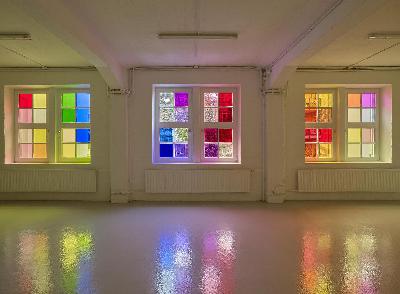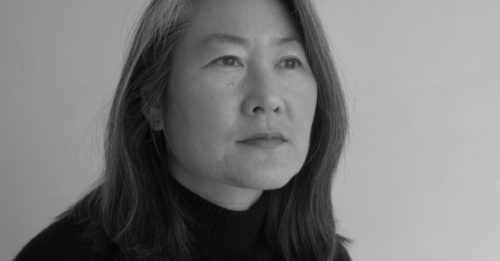Margaret Honda(1961-) is an experimental filmmaker and artist from Los Angeles, CA. An Answer to ‘Sculptures’ had an immediate pull on me. The 56 panes of glass at Künstlerhaus Bremen gallery became the exhibit itself. Honda used the E-Colour+ filters from Rosco, gel sheets that change the color of light for film and video production. The 323 colors are divided into 16 “reels” of 56 and rotated through 16 days. Not even the artist sees the entire work, because every day is different, and every time of day depending on the light through the windows.
It’s like Pantone color chips but for light. As a mosaic artist, part of what compels my love of the art form is watching how a piece changes depending on how the light illuminates. My work is usually on a opaque background, but transparency is still a factor, because I put the glass on a white surface in order to let in whatever light there is. Stratoz creates stained glass, and some glass that seems ordinary in a mosaic becomes transformed by light being able to shine all the way through.
Interview with Margaret Honda about her films Color Correction(2015) and Spectrum Revers Spectrum(2014) based on the timing tapes used for color correction in filmmaking. These punched paper tapes control the color valves on the printer. She describes the process of watching the film Color Correction for the first time:
I had actually written about the film before I ever saw it. And then once I saw it, my writing about it changed. I couldn’t have foreseen what happens when you’re watching these colors, and I couldn’t have imagined what happens in terms of time. Because with this film, one color is on the screen, and then it changes, and you don’t know how long the next color will be on screen before it changes again. And then there’s this odd retrospective aspect to the viewing, because when the color changes––and you know the color has changed because there was a different color before it––you’re then trying to remember what that color was before it. So you’re going back and forth between what you just saw and what you’re now seeing.
Margaret Honda website


